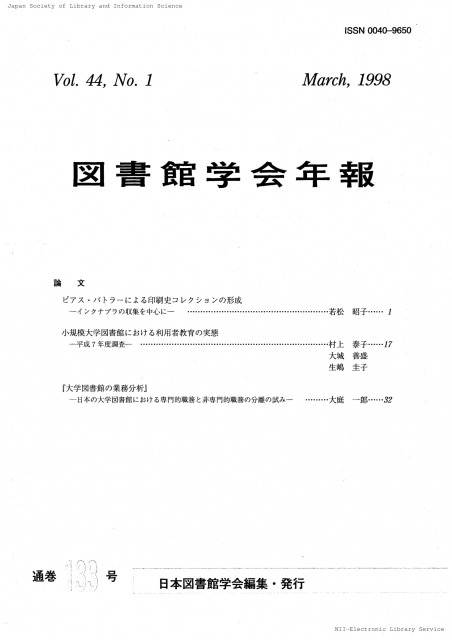Volume 32, Issue 3
Displaying 1-9 of 9 articles from this issue
- |<
- <
- 1
- >
- >|
Article
-
Article type: Article
1986Volume 32Issue 3 Pages 97-107
Published: 1986
Released on J-STAGE: November 10, 2021
Download PDF (1649K) -
Article type: Article
1986Volume 32Issue 3 Pages 109-118
Published: 1986
Released on J-STAGE: November 10, 2021
Download PDF (1466K)
-
1986Volume 32Issue 3 Pages 119-127
Published: 1986
Released on J-STAGE: November 10, 2021
Download PDF (1390K) -
1986Volume 32Issue 3 Pages 128-132
Published: 1986
Released on J-STAGE: November 10, 2021
Download PDF (695K) -
1986Volume 32Issue 3 Pages 133-140-1
Published: 1986
Released on J-STAGE: November 10, 2021
Download PDF (1102K)
-
1986Volume 32Issue 3 Pages 108
Published: 1986
Released on J-STAGE: November 10, 2021
Download PDF (131K) -
1986Volume 32Issue 3 Pages 143
Published: 1986
Released on J-STAGE: November 10, 2021
Download PDF (150K)
-
1986Volume 32Issue 3 Pages 140-2-141
Published: 1986
Released on J-STAGE: November 10, 2021
Download PDF (216K)
Summary
-
Article type: Summary
1986Volume 32Issue 3 Pages 142
Published: 1986
Released on J-STAGE: November 10, 2021
Download PDF (85K)
- |<
- <
- 1
- >
- >|
